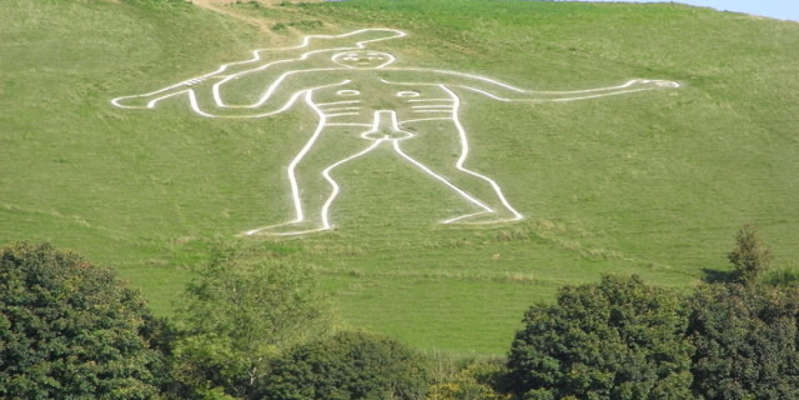
The figure of the famous giant from Cerne Ebbas turned out to be older than expected
Archaeologists from Great Britain have established the age of a giant chalk figure of a man carved into a hillside in the village of Cerne Ebbas. The image turned out to be much older than initial assumptions, writes New Scientist .
Initially, the discussion revolved around whether this drawing could even be considered an archaeological monument. The widespread version of the appearance of the image suggested that it was created during the civil war – in order to offend and humiliate Oliver Cromwell.
The earliest mentions of this drawing are also only about three hundred years old. The first dates back to 1694. The drawing was not remembered for a long time, until recently the image was refurbished, filling in the old grooves with chalk. Now the drawing is perfectly visible from above.
Apparently for this reason, in recent years, the scientific community has paid attention to the image. There have been speculations about the creation of a giant during the time of Roman Britain.
As a result, samples were taken on the spot, and after their laboratory study, previously existing hypotheses were recognized as erroneous. The quartz grains taken for analysis, found in the chalk and soil near the trenches, have been studied using an advanced dating method. It allows you to understand when the mineral was last exposed to sunlight.
As a result, the earliest grains of quartz from chalk are dated to about 650 AD, and the latest – 1310. The researchers suggest that the image appeared during this period of time. Scientists date it to the middle of the specified period, around 980 AD. At the same time, the giant may be even older, since the chalk in the furrows was changed several times.
It remains unclear for what purpose the strange drawing was created. Perhaps the little-known fact that at the end of the 10th century a Benedictine monastery was founded nearby explains the reason. The painted giant could be some kind of response to this event, researchers believe.
“The creation of this fantastically crude pagan image on the hillside could have been an act of resistance from the locals,” archaeologist Alison Sheridan said.
It is also unclear why the existence of the figure was hushed up for centuries, perhaps the giant was simply overgrown with grass.
However, archaeologist Timothy Darville of the University of Bournemouth believes that prehistoric sites have traditionally been often ignored in the UK. Even the notorious Stonehenge was not mentioned very often for a long time.
Earlier, Swiss archaeologists discovered an abandoned Bronze Age settlement at the bottom of Lake Lucerne. It is located near the city of the same name in the central part of the country. The ruins are estimated to be 3000 years old.

